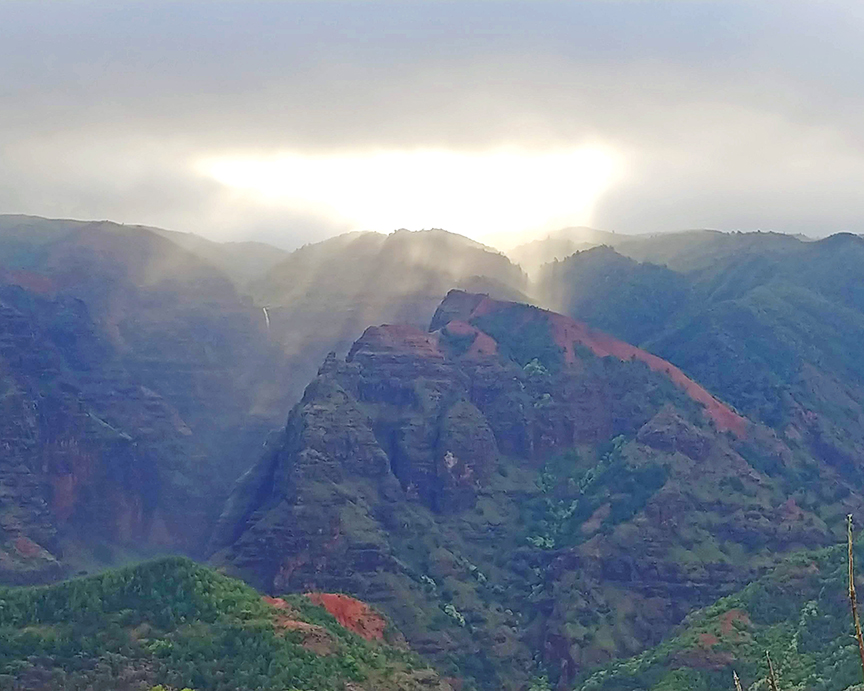By Mary Alexander
 What was it like to be young, in love, living in Hawai‘i, and Japanese-American just after the bombing of Pearl Harbor?
What was it like to be young, in love, living in Hawai‘i, and Japanese-American just after the bombing of Pearl Harbor?
Dr. Melody Miyamoto Walters, a graduate of Waimea High School and Professor of History at Collins College helps answer that question as she presents In Love and War: The World War II Courtship Letters of a Nisei Couple, based on letters exchanged between her grandparents from July 1941 and June 1943.
Dr. Walters will present her book at the Kaua‘i Soto Zen Temple Bon Dance on July 22 and 23, and at Līhu‘e Public Library at 6 p.m. on June 29.
The story is especially meaningful for Kaua‘i residents, as Dr. Walters’ grandparents, Naoko Tsukiyama Ogata and Yoshiharu Ogata, lived on Kaua‘i’s Westside (and Naoko still lives there). On Dec. 7, 1941, both were newly minted teachers.
Naoko grew up in Honolulu, the daughter of well-to-do merchants. She attended Methodist Church, was educated at Roosevelt High School and University of Hawai‘i at Mānoa, and after graduation, was sent to the Big Island to teach elementary school.
Yoshiharu grew up a country boy in Wahiawa Camp in ʻEleʻele, as his father was a luna for the McBryde Plantation. His family were members of the Kauaʻi Soto Zen temple, and after his graduation from Waimea High School, sacrificed to send him to Stout Institute in Wisconsin to earn a degree in teaching Industrial Arts. He was first sent to Honolulu to teach, and later to Waimea High School.

Dr. Melody Miyamoto Walters
Well before Dr. Walters knew her calling as a historian, she explored the history of WWII as a high-school English assignment to interview senior citizens in Waimea about their wartime experiences. That exploration took a turn in 2007. Her beloved grandfather had just passed away, and she and her mother Joy were cleaning out a closet in her grandparents’ home when they discovered bags full of the letters. As she held the letters in her hands, read the cursive handwriting with all the emotion it conveyed, discussed the letters with her grandmother and other family members, and performed extensive research in the UH archives, she realized her grandparents’ story transcended the personal and brought the history of Hawaiʻi Nisei during WWII alive.
This story shows the dramatic crucible in which these young people lived. The letters chronicle not only their blossoming feelings — revealed shyly at first, buffered through quoting popular song lyrics and other references — but the challenges they faced as Japanese Americans living under martial law.
Although I had read about some of these hardships in history books, none affected me as poignantly as hearing them from the Ogatas’ pens: I cried when Naoko wrote to say she couldn’t get a plane ticket to attend her own wedding, and cried again when each affirmed the ceremony didn’t matter, it was their lives together that did. I cringed when Yoshiharu described having to wait at the end of the line hoping to get a seat on a plane (behind the Haoles, Portuguese, and Chinese).
I realized the extreme choices young Japanese-Americans had to make to show their patriotism: for Yoshiharu: would he conform to the military ideal and enlist, and if he did, how could he fulfill his obligation to support his parents and repay his brother?
For Naoko: What was it like to live in Hawaiʻi at a time when males outnumbered females 150 to 1, and prostitutes were transported by the military to placate the servicemen and defense workers? How could she fulfill her patriotic obligation to entertain these men socially through organizations like the USO, yet stay clear of compromising situations or gossip?
In Love and War deepens readers’ understanding of the racism Japanese-Americans endured, and the complex position they occupied between contemporary American and traditional Japanese values.
Many books describe this postwar period from a militaristic point of view, but this book portrays history through the lens of a real-life love story from Kauaʻi. In Love and War inspires us to talk to kupuna while we can and record the fastvanishing stories of this “greatest generation.”
- Mary Alexander is an English instructor at Kaua‘i Community College.
Discover more from For Kauai Online
Subscribe to get the latest posts to your email.






Leave a Reply